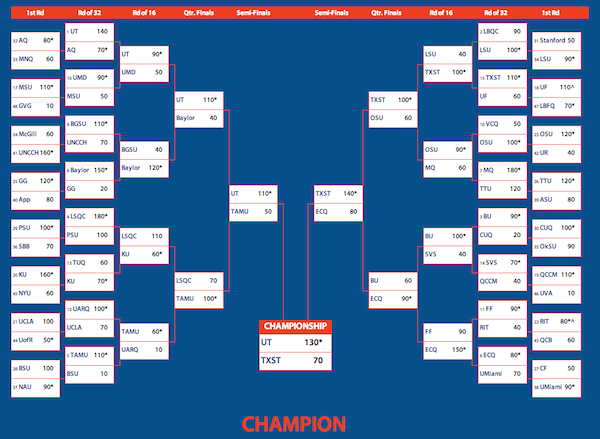Dear Sports Fan,
How do people gamble on horse racing? Like most people, I’ll watch the Kentucky Derby or one of the other Triple Crown races if its on but I never understand the gambling talk. Can you help?
Thanks,
Kelly
Dear Kelly,
As with many sports, but perhaps even more so in horse racing, one of the primary attractions is gambling. There are lots of ways to bet on a horse race, so many in fact, that to the uninitiated it may seem like an impossible task. There are really only two key things that need to be deciphered to have a basic understanding of how to gamble on horse racing.
The first is how to understand odds. Each horse has odds expressed as a combination of two numbers that can be written as “40 to 1” or “40/1”. These numbers are simultaneously an expression of what people think is going to happen and how lucrative betting on that horse could be. The easiest way to think about this is by fitting the numbers into the sentence: If the race were run [sum of two numbers] times, you should expect this horse to win [second number] times. As you sub the numbers in, you can see why betting on a 40/1 horse (one that, if the race were run 41 times, should be expected to win only once) is called a long shot bet or one that is unlikely to pay off. A bet on the favorite, this year a horse named American Pharoah who currently has 5/2 odds (if the race were run seven times, you should expect him to win twice), is more likely to win. That’s why the payouts also vary depending on the odds. A long shot bet on a 20 to 1 horse will typically pay $21 for every one you bet while a 5/2 bet like the one you’d place on the favorite this year will typically pay only $7 for every one you bet. There’s no need to memorize the payouts but if you want to cheat sheet, ABC News has a handy one here.
The second piece of gambling on horses to learn is that there are several different things that you can bet on. This is a little like the prop bets that are so popular around the Super Bowl. In horse racing, betting on which horse is going to win is just the start of things. There are also bets called Place or Show that give you a little flexibility in case your horse doesn’t win. Betting on a horse to place means you win if they come in first or second while show means you win if they come in first, second, or third. With each additional piece of flexibility, you stand to win less though. The other main vector of betting is in the other direction — betting on your ability to predict not just which horse will come in first but also which will come in second, third, fourth, or even fifth. As you add horses that must finish the race in a specific spot, your chances of winning go down and your potential payout goes up. The name for each bet also gets increasingly silly. Predicting the top two exactly is called an Exacta, three a Trifecta, four a Superfecta, and five a Super High-Five.
Unlike other sports, where it’s usually recommended not to split your rooting interests for the sake of gambling (watching a game in which you’ve bet money against your favorite team is a confusing and disheartening experience) at a horse race, it’s often more fun to make multiple bets. If you take a liking to two or three horses, it can sometimes be better to bet different combinations of them in exactas or even trifectas than to bet them straight-up.
Now that you have a basic understanding of some of the key concepts and terms in gambling on horse racing, you can go off and lose (or win!) some money or you can test your knowledge. Keep your eyes peeled to Dear Sports Fan for our upcoming annotated version of the classic horse racing gamblers song, Fugue for Tinhorns from the musical Guys and Dolls.
Thanks for reading,
Ezra Fischer



